Effective Screen Recording Techniques on Ubuntu
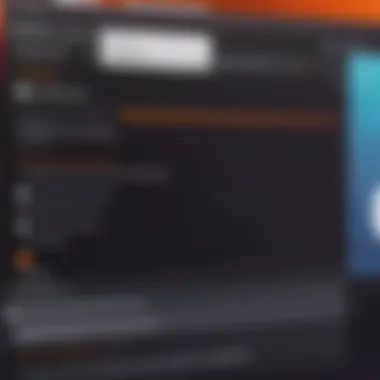
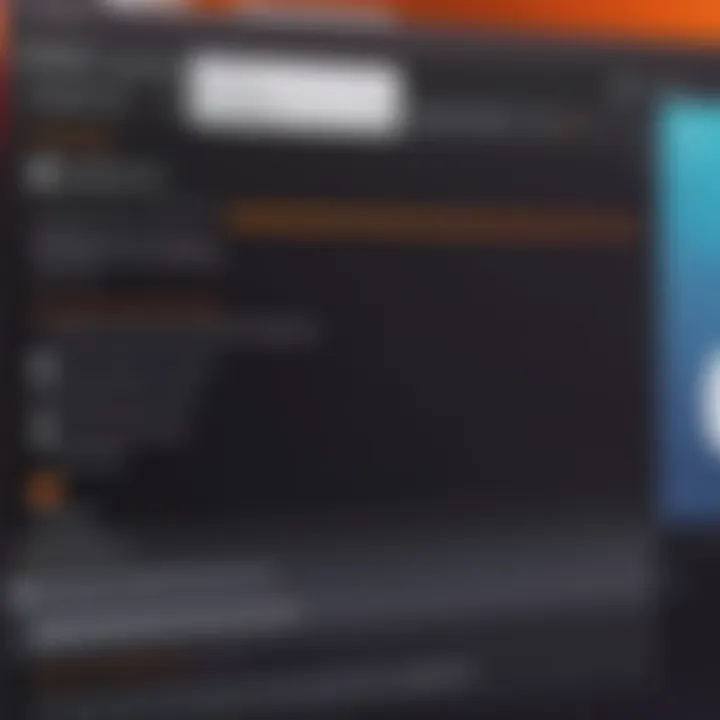
Intro
When it comes to capturing your screen in Ubuntu, the options available are as varied as the reasons you might need them. Be it for creating tutorials, recording gameplay, or simply sharing your desktop with a colleague, screen recording has become a valuable skill in today’s digital age. Given its applicability across personal, educational, and professional contexts, it's no wonder that a wide array of tools exists for this purpose.
In this exploration, we will dissect the built-in capabilities that Ubuntu offers alongside a selection of third-party applications that have emerged as popular choices among users. Each method brings its own set of features and nuances that cater to different needs and user capabilities.
Before diving into specific tools, it’s important to understand what makes screen recording so essential in our tech-driven world. Being able to visually communicate ideas can bridge gaps that text or verbal explanations cannot—whether that means demonstrating a process or showcasing a project. By the end of this article, readers will be better equipped to select the most suitable screen recording solution for their unique requirements.
Let's embark on this journey by first unwrapping the fundamental tools that come bundled with Ubuntu.
Prolusion to Screen Recording on Linux
Screen recording has become a vital tool in the digital age, serving various audiences from educators to gamers. Understanding the functionality of screen capture can significantly enhance communication and learning experiences. In the world of Linux, particularity Ubuntu, screen recording options have progressed, making it easier for individuals to capture their screen and share it with others. This article delves into the myriad of screen recording options available in Ubuntu, analyzing both built-in and third-party tools to give users a thorough foundation for their screen recording needs.
Understanding the Need for Screen Recording
Why would someone need to record their screen? The answers are multifaceted. For educators, recording lectures or tutorials enables the delivery of content to remote learners. Games developers benefit by creating walkthroughs or tutorials for their games. Even in business, screen recordings are valuable for demos or error reports.
- Documentation: Sometimes, explaining a problem verbally isn’t enough. A visual representation can bridge that communication gap.
- Record Keeping: Having a video record can serve as a reminder or reference for future endeavors, whether for software testing or method demonstration.
- Sharing Knowledge: The ability to share visual content is essential in today’s collaborative environment. It allows teams to align better and learn from one another.
The need for screen recording tools often emerges from trying to maximize understanding, enhance learning, or simply share information effectively.
"A picture speaks a thousand words, but a video can encapsulate endless information—especially when it comes to the digital realm."
Investigating different screen recording options on Linux highlights the effectiveness of these tools and their applications. With numerous software options available, there’s no shortage of choices for usability, functionality, and flexibility. Therefore, wading through the available tools and understanding their unique features can provide valuable insights whether one is recording for fun, learning, or professional purposes.
Overview of Ubuntu's Capabilities
In the realm of operating systems, Ubuntu has carved out a solid niche, especially among users who appreciate an environment that is both powerful and user-friendly. As technology advances, the need for screen recording has surged, whether it’s for creating tutorials, capturing gameplay, or documenting software bugs. Understanding Ubuntu's capabilities in this area not only highlights its versatility but also its commitment to providing tools that meet the diverse needs of its user base.
Over the years, Ubuntu has embraced several screen recording features, making it easier for users to navigate their recording pathways while grasping the full potential of the system. The presence of native recording tools means that new users don't necessarily need to wade through downloads and installations; they can jump right into screen recording with minimal fuss.
Native Screen Recording Features
Ubuntu’s built-in tools intuitively cater to various recording needs right out of the box. For instance, the GNOME desktop environment includes a simple screen recording function that enables users to capture their screens quickly. This feature might not boast fancy editing options, but it fulfills basic needs adeptly.
Key Features:
- Instant Access: You can start recording your screen with a few keystrokes, eliminating unwanted steps during your workflow. This is essential for developers and IT professionals who often require swift demonstrations of their processes.
- Flexibility: Depending on the version of Ubuntu, different built-in utilities may be available. It adapts well to user requirements and preferences, making it an accommodating choice for tech enthusiasts.
- Lightweight: Since these features are integrated within the OS, they consume minimal system resources, ensuring your performance isn't hindered while you capture the action.
"Ubuntu’s native recording tools are an embodiment of the principle that simplicity can go hand in hand with functionality."
Another noteworthy aspect is the ability to record directly to various formats, which comes in handy for different use cases. For those engaging in detailed educational activities, having a straightforward output format means less time worrying about file conversions.
While advanced users may eventually reach for third-party applications, the presence of these native features cannot be discounted. They offer an accessible entry point for new users, demonstrating Ubuntu's commitment to inclusivity in technology.
Moving from these basic tools to exploring dedicated applications, users can unlock a world of customization and control, enabling seamless integration of recording within their professional or personal projects.
Top Screen Recording Tools for Ubuntu
Finding the right screen recording tool on Ubuntu is akin to hunting for a needle in a haystack. With the plethora of options available, making the right choice can dramatically affect the quality, efficiency, and usability of your screen recordings. Some tools cater specifically to gamers, while others serve educators or developers, so understanding which one fits your needs best is crucial.
This section dives into several widely regarded screen recording applications, each with distinct features that set them apart. Learning about these tools can save you time and effort, ensuring that you’re well-equipped to capture your screen effectively for any purpose.
OBS Studio
Installation Process
Installing OBS Studio on Ubuntu is a rather straightforward task, especially with its availability in the official software repositories. You can use the terminal for installation, which is pretty common among seasoned users. Just a quick command:
This command grabs OBS Studio directly from the repository, ensuring you get the latest version supported by your distribution. What makes it particularly appealing is its cross-platform nature, meaning it runs well not just on Ubuntu, but also on Windows and macOS. Users benefit from a robust community support, comprehensive documentation, and tutorials—all contributing to a hassle-free setup.
Configuration Settings
Once installed, the configuration process is where the magic really begins. OBS Studio provides a multitude of settings that let users tailor the application to their needs. For instance, you can adjust video resolution, frame rate, and bit rate to optimize output quality. The flexibility in settings makes it a top choice, allowing users to implement advanced setups, from simple recordings to complex live-streaming scenarios.
A unique aspect lies in its ability to support multiple inputs—cameras, microphones, and screen sources can easily be mixed and matched. While this depth can be overwhelming for newcomers, it caters to advanced users who desire custom setups.
Recording Techniques
The recording techniques available in OBS Studio are varied and powerful. Users can create different scenes for various recording needs, which can be switched on the fly. You can include overlays, transitions, and even external sources, amplifying creativity in your recordings. Understanding these techniques can elevate the quality of your content significantly.
But with great power comes great responsibility; the complexity might baffle those new to screen recording. Nonetheless, mastery over these tools will enable users to create professional-grade footage, making OBS Studio a standout choice.


SimpleScreenRecorder
Installation Guide
Installing SimpleScreenRecorder is as easy as pie, making it ideal for those who prefer simplicity. Its availability through the Ubuntu Software Center means you can click your way through to installation without delving into terminal commands.
Alternatively, you can still opt for the command line with:
The seamless installation process is one of its hallmark features, appealing to users who may shy away from complicated setups. Once installed, it offers a user-friendly interface to help users find their way around.
User Interface Overview
When it comes to user interfaces, SimpleScreenRecorder shines brightly. It's designed with clarity in mind, guiding users through recording settings without overwhelming them. The layout is intuitive, presenting choices for frame rate, audio input, and video quality in a clean format.
This straightforward approach appeals to a broad audience, from casual users to professionals who prefer quick and efficient setups. While it may lack some of the advanced features found in OBS Studio, its simplicity promotes accessibility, allowing users to jump right into recording with minimal fuss.
Common Use Cases
SimpleScreenRecorder is suited for a variety of use cases. Whether you're a teacher preparing tutorial videos or a gamer wanting to share gameplay, this tool has got you covered. It’s particularly beneficial for users who want to quickly capture their screen without getting bogged down with intricate settings.
However, for those looking for more advanced features, it may come short as it avoids complexity. Still, it remains a reliable choice for simple screen recordings, making it perfect for quick tasks.
Kazam
Quick Setup
Kazam offers an easy setup that rivals SimpleScreenRecorder. You can put it to work in a jiffy. Installation through the terminal can be done with:
This allows you to start recording with just a few clicks. The simplicity of getting it up and running makes it a go-to option for users who want immediate results without a lengthy setup process.
Screen Capture Modes
One of Kazam's notable features is its versatility in screen capture modes. You can opt for full-screen, window, or selected area captures. This flexibility is essential for users wanting to capture specific content without unnecessary clutter.
However, some users might find the lack of advanced customization options limiting. If users need granular adjustments, Kazam may not fulfill every requirement, but it certainly provides essential functionalities with ease.
Saving and Sharing Options
When it comes to saving and sharing your recordings, Kazam provides efficient options. You can save recordings in various formats, making it easy to meet specific project requirements. Additionally, integrated sharing options allow for quick uploads to platforms like YouTube.
Yet, despite these conveniences, the limited editing capabilities post-recording could prove to be a drawback for users intending to fine-tune their videos before sharing. Nonetheless, for quick sharing, it does the trick nicely.
RecordMyDesktop
Command Line Interface
If you’re comfortable with the command line, RecordMyDesktop lets you take control of your recordings purely through text commands. This aspect is particularly appealing for developers or advanced users who thrive in the terminal environment. The straightforward command is:
This direct approach offers simplicity and speed for users familiar enough with command lines, allowing for rapid execution of recording tasks without the need for a graphical interface.
Graphical User Interface
For those who prefer a GUI, RecordMyDesktop also offers a graphical interface, catering to different user preferences. The GUI is relatively simple and allows users to set basic parameters with ease. Despite this simplicity, it still provides the essential functions needed for effective screen recording, allowing users to toggle options like audio capture with just a few clicks.
However, it may not compete with the advanced features found in other software but is serviceable for quick recordings.
Performance Analysis
Conducting performance analyses helps users understand how well their system handles the recording process. RecordMyDesktop maintains a light system overhead, which is beneficial for users wanting minimal disruption while they record.
Yet, high-resolution recordings might come with a trade-off that could impact performance depending on hardware specifications. Keeping an eye on performance metrics during recording is advisable to avoid choppy footage.
Overall, each of these screen recording tools offers unique traits and capabilities catering to various user needs, whether it's simplicity, power, or something in between.
Choosing the Right Tool Based on Use Case
Selecting the right screen recording tool in Ubuntu can feel like looking for a needle in a haystack. With many options on the menu, it’s essential to match your needs with the right software. The various scenarios in which screen recording is used, whether for gaming, education, or development, have their own requirements. Getting this match right enhances your productivity and ensures that the final output meets your expectations.
When thinking about the purpose of your screen recordings, consider the specific functionalities that may be needed. For instance, gamers often need high-performance software to capture fast-moving scenes. Meanwhile, educators may prioritize simplicity and ease-of-use. Each context carries its unique set of priorities that influences the choice of tool.
For Gamers
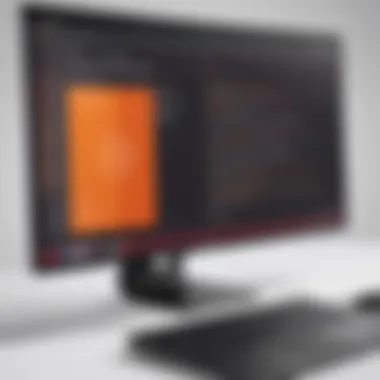
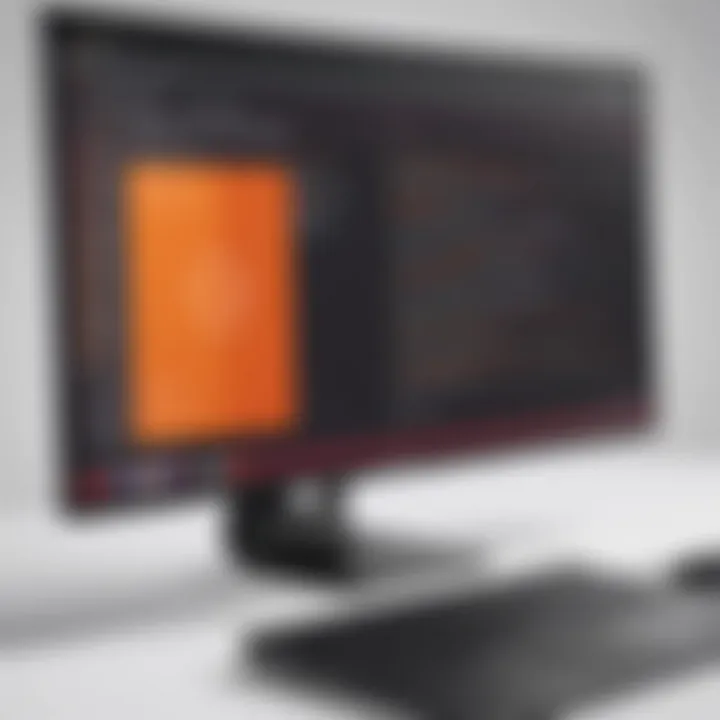
Gaming is like a roller coaster ride—fast-paced and thrilling. The right screen recording software can capture every twist and turn. Gamers typically require tools that can handle high frame rates without dropping significant pieces of action. Tools such as OBS Studio, renowned for its ability to record in high-definition while minimizing lag, cater specifically to this need.
A key consideration is the option for real-time editing and streaming. This is critical as many gamers engage in platforms like Twitch or YouTube. The ability to embed overlays or camera feeds directly into the gameplay can make your content stand out.
Performance tips for gamers include:
- Choosing a tool that supports hardware encoding for improved performance;
- Recording with a higher bitrate for clear visuals;
- Leveraging hotkeys to streamline the recording process without disrupting gameplay.
For Educators
Education is now an online global affair, and screen recording tools make it easier to share knowledge. For educators, simplicity, and clarity often take precedence. Kazam is celebrated for its user-friendly interface. It's tailored for those who may not want to become tech wizards before using their recording software.
Tools used in educational settings also often include options to highlight sections or add annotations, enriching the learning experience for students. The ideal choice revolves around creating a seamless experience where educators can focus on teaching rather than troubleshooting technical issues.
Recommendations for educators include:
- Opting for tools that allow for easy sharing to platforms like Google Classroom;
- Ensuring the tool offers sufficient options to record audio alongside video, creating a more comprehensive resource;
- Checking if the software possesses built-in editing features for more refined recordings.
For Developers
For developers, screen recording is often about demonstrating codes, applications, or processes. The tools of choice cater to diverse needs, from debugging to creating tutorials. RecordMyDesktop stands out for developers because it can be operated via command line, offering powerful capabilities for those comfortable with text-based commands.
The focus for developers often leans towards features that dig deeper—such as the ability to record directly from a terminal session or overlaying webcam footage during tutorials. Another key aspect is the ability to export recordings in formats that allow easy integration into documentation or within other software.
Best practices for developers could include:
- Exploring tools that allow incorporating the terminal into the recording, giving a clearer picture of the coding process;
- Using recording tools that permit lossless exports to maintain video quality;
- Considering how to balance system resources while recording to keep the application running smoothly.
Remember, the best tool is the one that fits your unique requirements, making your task at hand easier, not harder.
Best Practices for Screen Recording
When it comes to screen recording, having the right practices in place can make a significant difference in the quality and effectiveness of your recordings. Whether you're documenting a software tutorial, crafting a presentation for work, or simply sharing gameplay, laying the groundwork is essential. Understanding the best practices ensures that the final product not only meets your expectations but is also easy for your audience to engage with and understand. This section aims to shine a light on specific elements that make up good practices, their benefits, and considerations for producing high-quality recordings.
Preparing Your Environment
Good preparation can greatly enhance the quality of your screen recordings. Start by clearing your desktop of any distractions; remove clutter and unnecessary files to ensure that the focus remains on your recording's content. Consider silencing notifications, as alert sounds popping up during a recording can be distracting. Running your screen recording software alongside the application you're documenting creates a smoother experience.
Additionally, you might want to tell your audience about the hardware being used. For instance, a high-resolution display can showcase the details better, and ensuring that your microphone is placed correctly will improve audio quality. High-Definition (HD) monitors are a plus, as they provide a clearer picture. Keep in mind that a well-prepared environment speaks volumes about the professionalism of your content.
Optimizing Performance
Next on the list is optimizing performance. Low frame rates and choppy recordings can happen if your system is not set up appropriately. Close any unnecessary applications that might be running in the background. Each program you leave open consumes CPU resources and can impact the performance of your recording software.
Furthermore, use specific software settings tailored to your recording purpose. For example, frame rates at 60 FPS are ideal for fast-paced applications like gaming, while 30 FPS will suffice for slower, more static content such as tutorials. Adjusting the resolution settings can help too—recording in 1080p might be great for clarity but may not be necessary for simpler tasks. Here’s a quick checklist to help you optimize:
- Close background applications
- Adjust resolution to match the output required
- Select appropriate frame rate
- Ensure enough free space on your hard drive for the recorded files
Editing Your Recorded Footage
Editing is where a good recording can turn into an exceptional one. It's crucial to trim unnecessary parts and enhance your content post-recording to refine the viewer's experience. When editing, focus on areas that might need clarity, such as sections where you might have stammered or faltered.
Utilizing well-crafted transition effects can help maintain a natural flow in your video. Various video editing tools available on Ubuntu can help with this, like Kdenlive or Shotcut. Not only do they offer basic trimming and cutting features, but they also have advanced capabilities such as applying filters and adding text annotations.
“Editing is where the magic happens; it transforms your raw footage into a polished final product.”
In summary, incorporating best practices in screen recording—right from preparation, optimizing performance, to carefully editing your footage—can lead 여러분을 위한 a much better experience for both you and your audience. Taking these steps seriously allows creators to produce engaging, high-quality recordings that leave a lasting impression.
Troubleshooting Screen Recording Issues
Screen recording, while a valuable tool, can sometimes be fraught with problems that mar the user experience. Addressing these issues is crucial, especially for those who rely on recordings for educational purposes or professional presentations. A seamless recording helps to convey ideas effectively and enhances the overall quality of the content produced. Thus, troubleshooting skills can empower users to maintain smooth operations and navigate obstacles with ease.
The importance of troubleshooting in this context cannot be overstated. First, it ensures that the user can maximize the potential of the software tools at their disposal. Additionally, understanding common issues and remedies fosters a more reliable recording environment. Also, issues can arise from various interconnected sources, such as hardware limitations or software bugs. Here’s where an in-depth knowledge of troubleshooting comes into play.
Common Problems and Solutions
Even experienced users can run into hitches during screen recording. Below are frequent problems encountered along with practical solutions:
- Low Quality of Recorded Video
Problems with resolution, frame rate, or bitrate can lead to recordings that look fuzzy or grainy. - No Audio Capture
If you're not recording any sound, it can defeat the purpose of your project, especially in tutorial videos. - Lagging During Recording
Experiencing choppiness can be frustrating and is often associated with system performance issues. - Application Freezes
This can happen due to software related issues or conflicts with other applications.
- Solution: Adjust the output settings in your screen recording tool to a higher resolution or frame rate.
- Solution: Make sure the correct audio source is selected in the audio settings; check mic settings.
- Solution: Close unnecessary applications running in the background to free up system resources. Also, consider lowering the video quality temporarily if your system struggles.
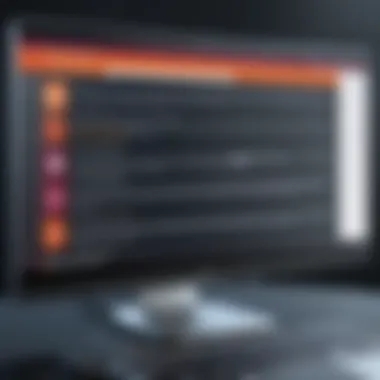
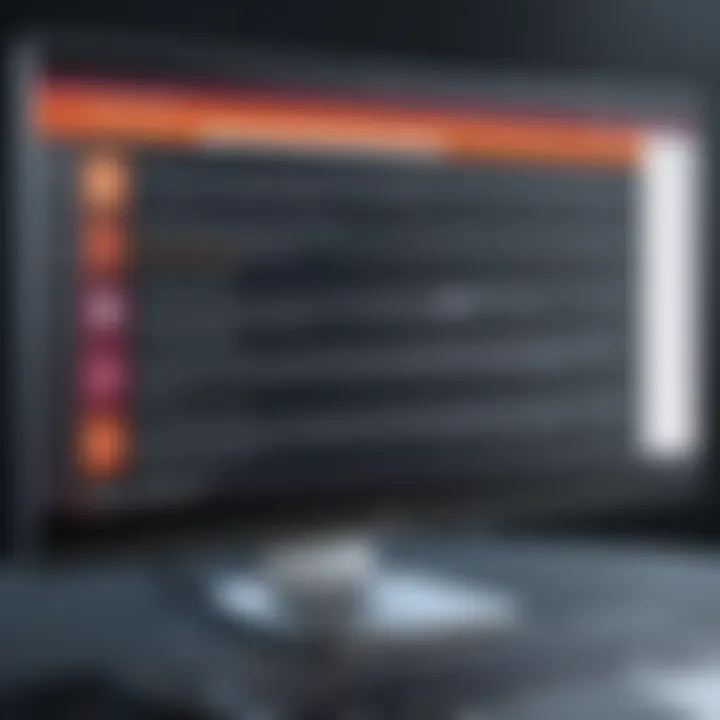
- Solution: Restart the screen recording software. Ensure it's updated to the latest version, which can fix bugs and improve stability.
Remember: Keeping your system and software updated is a fundamental step in avoiding many common issues.
Maximizing Frame Rates
Frame rate is pivotal for creating smooth and professional-looking recordings. Higher frame rates can make a significant difference, especially in contexts like gaming or complex software demonstrations. Here’s how you can ensure that you achieve optimal frame rates during your recording sessions:
- Check Your Hardware
Older computers may not support high frame rates effectively. Consider upgrading RAM or even using a dedicated graphics card. - Adjust Software Settings
Delve into the settings of your recording tool. Most software allows you to customize frame rates. Set a balance between visual quality and performance—30 fps is often suitable for instructional videos, while 60 fps may be better for gaming content. - Close Background Applications
Similar to remedies for lagging, freeing up resources can drastically enhance frame rate. Ensure any unnecessary software is closed before recording. - Limit Number of Screens
If possible, record in full-screen mode instead of using multiple monitors, which can be taxing on resources and lead to dropped frame rates.
By adopting these strategies, users can effectively tackle troubleshooting challenges, ensuring a smoother experience in their journey of screen recording on Ubuntu.
Integration with Other Applications
Integrating screen recordings with other applications isn’t just a nice-to-have; it’s a game changer for many users, particularly those in education, IT, and software development. When you record your screen, you capture not just the visual output but the entire workflow. This can be crucial for illustrating concepts, leading workshops, or conducting demonstrations. Having the ability to seamlessly merge these recordings with presentation tools or instructional materials enriches the overall experience for both the presenter and the audience.
Using Screen Recordings in Presentations
When it comes to presentations, the effective use of screen recordings offers a tremendous advantage. Imagine standing before an audience and being able to show them something in real-time without skipping a beat.
- Engagement: Visual aids keep the audience engaged. Instead of showing static slides, a recorded demonstration can vividly illustrate your points. For instance, if you are presenting new software functionality, a screen recording that captures the process can provide clarity that a mere verbal explanation might miss.
- Context: Including live interactions in presentations adds context. When you demonstrate a process or feature directly from the application being discussed, it provides real-world relevance. This ties back what you’re saying to practical application, making it far easier for the audience to grasp concepts.
- Flexibility: You can record various takes and edit them to highlight key moments. This gives you the power to cut out unnecessary fluff while ensuring that the essence of your message is retained. Plus, integrating with tools like LibreOffice Impress allows for straightforward embedding of these recordings, enhancing the quality of your presentation.
To leverage these benefits, software options like OBS Studio or Kazam can help produce high-quality recordings that are presentation-ready. Assembling a presentation with these elements gives your audience not only information but an experience.
"The medium is the message." – Marshall McLuhan
This famous quote underscores the importance of how we convey information. Integrating screen recordings with presentations is a powerful technique that can elevate standard talks into memorably enlightening experiences.
Incorporating Recordings into Tutorials
When creating tutorials, video content is king. Screen recordings are an effective way to cater to various learning styles, especially for tech-centric subjects. Here’s why integrating screen recordings into tutorials can be so instrumental:
- Step-by-step Guidance: Using screen recordings allows you to guide users through processes visually. This helps learners follow along more easily, especially in complex procedures where written instructions might not suffice.
- Multifunctionality: Various screen recording tools offer editing options that let you annotate, highlight, and focus on specific areas of interest. These annotations can be crucial for clarifying points or emphasizing critical actions during demonstrations.
- On-demand Access: Tutorials with recorded screens can be hosted online, allowing users to learn at their own pace. This flexibility can cater to working professionals, hobbyists, or students who might need to revisit concepts without the pressure of a live session.
To effectively incorporate recordings, consider applications that allow simplified editing and easy exporting. SimpleScreenRecorder, for example, is a user-friendly tool that many find effective for creating tutorial content. Accessibility should also be kept in mind; ensuring that recordings are available in formats compatible with popular video-sharing platforms can further widen their reach.
Incorporating recordings into tutorials and presentations transforms the learning experience, making it more interactive and effective, and can significantly enhance understanding.
Future of Screen Recording on Ubuntu
The landscape of screen recording on Ubuntu is not static but evolving rapidly. Technologies advance, user needs change, and so do expectations. Understanding the future of screen recording in this ecosystem becomes crucial for anyone invested in its applications—be it software developers, IT professionals, or tech enthusiasts. This section will unfold the innovations on the horizon, examining how they will shape our recording experiences.
Emerging Technologies
When it comes to emerging technologies in screen recording, the focus is often on enhancing usability, performance, and functionality. Several trends are set to redefine the scene:
- AI Integration: Artificial intelligence is no longer a futuristic concept—it's here now. AI can help automate recording tasks, optimize settings based on system performance, and even provide automatic editing features, streamlining the workflow significantly. Imagine recording a session, and the software does the heavy lifting for you by highlighting key moments.
- Cloud-Based Solutions: With the rise of remote work, cloud-based screen recording tools are gaining traction. Instead of storing recordings on a local machine, users can save them directly to the cloud. This allows easy access from any device, provides collaborative options, and ensures that storage limitations are a worry of the past.
- Enhanced Resolution and Frame Rate: Users are increasingly looking for higher-quality video captures. Technologies that allow higher resolution formats and fluid frame rates are becoming more commonplace. Many applications now promote 4K capture capabilities, catering to a more advanced audience that values clarity in their recordings.
"As technology accelerates, the ways we record and share our digital interactions must keep pace, ensuring that quality never takes a backseat."
Anticipated Features
Several anticipated features are set to enhance the functionality of screen recording options in Ubuntu:
- Multi-Platform Support: As screen sharing and recording become integral to collaborative efforts, the capability to record across multiple platforms will be crucial. Users should expect integration with various operating systems, including potential interplay between Windows, Mac, and mobile devices.
- Better Editing Tools: The future is not just about recording; it also involves how we edit these recordings. Simpler, more intuitive editing tools will likely come bundled with screen recording applications, allowing users to cut, splice, and annotate without needing separate software.
- Real-Time Collaboration Features: Think about how remote collaboration has fundamentally shifted our working practices. Real-time collaboration features within screen recording tools will allow users to record while collaborating with others. This would be particularly advantageous in educational settings, where educators can demonstrate and interact while recording.
- Accessibility Options: As awareness grows about making technology available to all, we can expect screen recording tools with robust accessibility features. This may include voice commands for recording and transcription services that convert spoken content into text accurately.
In summary, the future of screen recording on Ubuntu is poised to incorporate cutting-edge technologies with user-friendly features. As the needs of developers, IT professionals, and tech enthusiasts evolve, so too will the capabilities of the tools they rely on. By closely following these trends, users can stay ahead of the curve, ensuring their skills remain sharp and relevant.
Ending
Wrapping up this exploration of screen recording on Ubuntu, it's vital to recognize how relevant it is in today's digital landscape. Whether you are an educator developing engaging lessons, a software developer documenting coding processes, or a gamer sharing your gameplay, screen recording serves many purposes and offers avenues for creativity and productivity.
In this article, we have covered a range of tools and techniques that cater to different user needs. The standout takeaway is the understanding that the choice of tool significantly impacts the recording quality, user experience, and the learning curve. For instance, while OBS Studio offers extensive features and flexibility, it may overwhelm a newcomer. In contrast, application like Kazam prioritize simplicity for quick setups.
Equally important are the best practices we've highlighted. Taking the time to optimize your recording environment can save considerable frustration during the editing process. Troubleshooting common issues proactively ensures that your recordings turn out polished instead of slapdash, balancing technical capability with user-friendliness.
Ultimately, knowledge is power. Knowing how to navigate the sometimes complex ecosystem of screen recording on Ubuntu empowers users to create effective and engaging content that resonates with their audiences. It’s not just about what you capture; it’s about how you present it. As technology evolves, the integration of advanced features like AI-driven editing tools could be on the horizon for future versions of recording applications, making processes even simpler.
With the information gleaned from this article, you should feel equipped to select the right tools and techniques for your screen recording endeavors. The potential to create, educate, and share is vast, and screen recording is not just a tool; it’s a medium for storytelling and skill showcase in the ever-growing digital world.
Summary of Key Points
- Versatile Applications: Screen recording is valuable across various fields, including education, gaming, and software development.
- Diverse Tools: Different tools like OBS Studio, Kazam, and SimpleScreenRecorder cater to different needs.
- Best Practices: Optimizing the recording environment and knowing troubleshooting techniques can enhance the final output.
- Future Potential: Emerging technologies could lead to sophisticated features enhancing user experience in screen recording applications.
Final Thoughts
As the landscape of technology continues to evolve, the significance of mastering screen recording on Ubuntu cannot be overstated. It's about more than just capturing a screen; it's a gateway into visual storytelling. The ability to record, edit, and share your content effectively reflects both skill and comprehension.
Screen recording tools on Ubuntu give the user the keys to create compelling narratives or documentation that advocate their unique voice. Tips discussed here, if put into practice, have the potential to elevate your projects to new heights. So whether you are looking to produce a tutorial, share gameplay, or document a process, keep these best practices and tools in mind, and create with confidence.
"In every bit of digital creativity, there lies a hidden story waiting to be shared. The right tools can help unveil it."
By embracing what's available today and staying curious about what's next, you're sure to stay ahead and make your mark in the digital realm.



